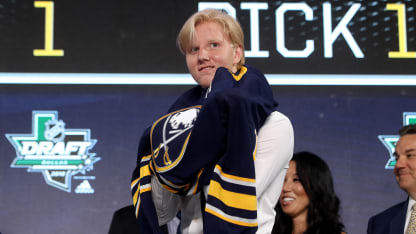The five other Sweden-born players selected in the first round after Dahlin are defenseman Adam Boqvist (No. 8) of Brynas Jr. in Sweden's second division to the Chicago Blackhawks, center Isac Lundestrom (No. 23) of Lulea (SHL) to the Anaheim Ducks, defenseman Filip Johansson (No. 24) of Leksand Jr. in Sweden's second division to the Minnesota Wild, defenseman Nils Lundkvist (No. 28) of Lulea to the New York Rangers and defenseman Rasmus Sandin (No. 29) of Sault Ste. Marie in the Ontario Hockey League to the Toronto Maple Leafs.
"It starts long before they get to their draft year," said Craig Button, a former NHL general manager who is director of scouting and NHL analyst for TSN. "It starts in youth hockey. Sweden programs want to instill in the kids to make plays with the puck, skate, and to not hesitate. You can be creative or use your imagination to do things, but you don't just show up at 17 years old on a Friday night in the SHL and decide, 'OK, now that I'm here, I can do that.' It's a process.
"They want to emphasis skill; you have to skate and compete in the body-on-body areas, and you have to use your head and make plays with the puck, but the key is fostering and encouraging."
Sandin played five games with Rogle (SHL) before joining the Sault St. Marie to become acclimated to hockey in North America this season. He said Friday he would like to return to Sweden and play out the final year of his contract with Rogle in 2018-19, but that decision is pending. The Maple Leafs might want him to remain in the OHL to watch him develop in North America.
"We'll see what Toronto thinks," Sandin said. "But my contract (with Rogle) is still for one more year. I think I feel more ready to play against men (in the SHL) next year, for sure."
Button said the bottom line is that players in Sweden are having fun playing the game at a young age, and the players are benefitting as a result.
"It's great to talk about the NHL, but when you start with kids at ages 10-12, the biggest thing you want to do is make sure they're having fun," Button said. "If they're not having fun, they're dropping out and your program takes a step back. You want the kids to have some fun because that keeps them interested."

